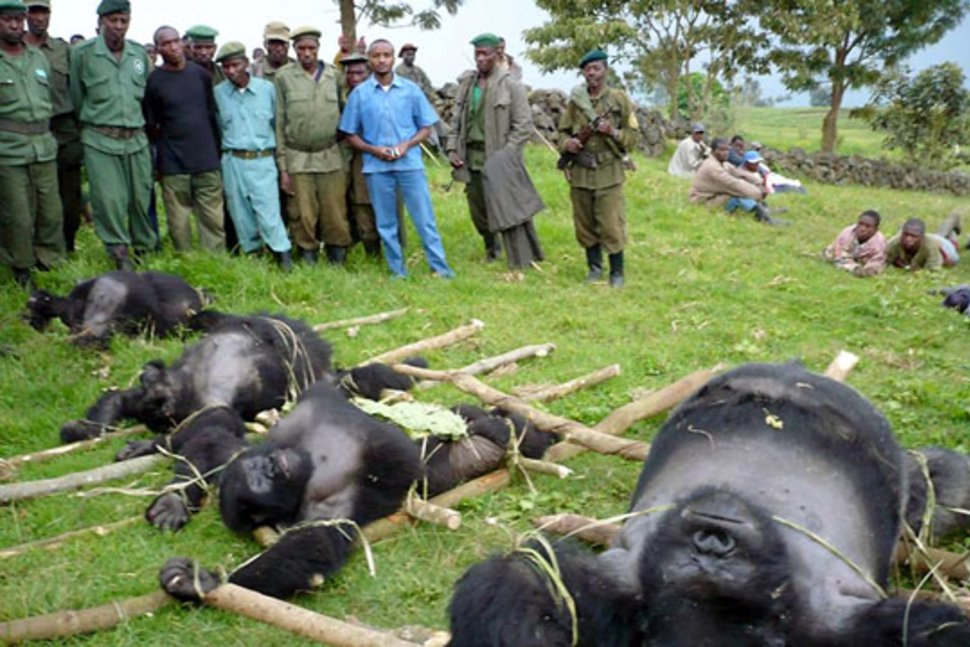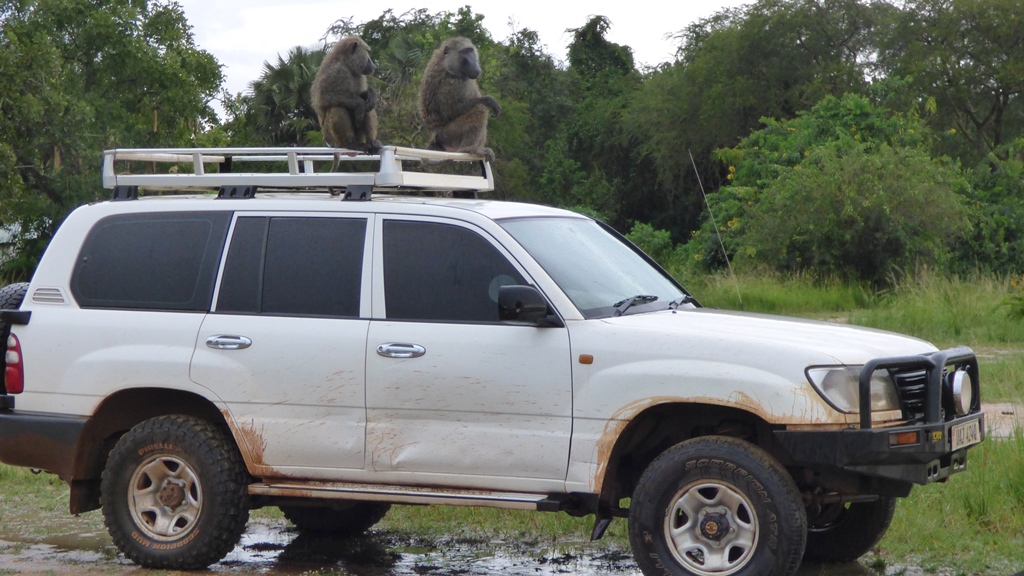
Gorillas found killed in Virunga National Park in DR Congo. Photo copyright: ALTOR IGCP GOMA/AP
The Mountain Gorillas are one of the 4 subspecies of the gorillas that exist in the world. The other three being the Western Lowland, Cross River, and Grauer’s gorillas. All are found on the African continent
The mountain gorillas, famous for gorilla trekking tours, are found in the Virunga mountains (shared between Uganda, Rwanda & Democratic Republic of Congo) and Bwindi montane forest (in Uganda). A few decades ago, the mountain gorillas were on the way to extinction with less than 600 individuals left. But it is because of the increased awareness and conservation efforts (championed by Dian Fossey in the 1980s) that there has been a turnaround from extinction to growing numbers and currently there are more than 1000+ mountain gorillas. At the moment the mountain gorilla population is growing at 4% per year.
According to the Gorilla Doctors, an organization engaged in the conservation of the gorillas gives the following as the top challenges facing the mountains gorillas (human caused).
Loss of habitat
This is one the biggest challenges of the gorillas. With a spike in the population of humans, pressure has been exerted on the habitats of the gorillas as people have cleared vast forests and lands to settle and grow crops.
It is surprising to learn that the two mountain gorilla homes Bwindi forest and the Virunga mountains were once a continuous jungle but the humans erased the forests until Bwindi forest was left isolated.
Human – gorilla conflict
Due to the diminished gorilla habitat, the gorillas tend to go beyond their jungle into the neighboring farmlands and communities looking food in period of scarcity in the forest. This causes friction with the people and gorillas are hurt or fall into the hands of wildlife traffickers.
Poaching and bush meat trade
Poachers set up snares in the gorilla parks targeting other animals such as antelopes but gorillas all in these traps leading to serious injuries and even death to the gorillas.
While Ugandan and Rwandans do not eat primate meat, however Congolese tribes neighboring the Virunga mountains do have primates on their menu and gorillas are therefore hunted for meat.
Emerging diseases and treatment of the wild
Gorillas and humans share 98.4% DNA, hence these species can catch the same diseases. As gorillas have been getting closer to humans the risk of gorillas being infect by new diseases has increased. Recently gorillas have been found to suffer from known human diseases. For instance the Nkuringo gorilla family in Bwindi National Park was found to suffer from scabies that was traced back to a human family near the park.
Gorilla tourism has also increased the risk spreading diseases from the rangers habituating the gorillas or the tourists during the gorilla tracking.
Leave a comment Cancel reply
Archives
- March 2025 (1)
- February 2025 (1)
- January 2025 (1)
- November 2024 (2)
- October 2024 (3)
- May 2024 (1)
- February 2024 (1)
- January 2024 (2)
- November 2023 (2)
- September 2023 (1)
- July 2023 (8)
- June 2023 (14)
- May 2023 (1)
- April 2023 (1)
- March 2023 (3)
- February 2023 (6)
- January 2023 (6)
- December 2022 (1)
- November 2022 (1)
- October 2022 (2)
- September 2022 (1)
- August 2022 (1)
- May 2022 (17)
- April 2022 (5)
- March 2022 (7)
- February 2022 (3)
- January 2022 (7)
- December 2021 (7)
- November 2021 (2)
- October 2021 (1)
- September 2021 (2)
- August 2021 (2)
- July 2021 (6)
- June 2021 (1)
- May 2021 (4)
- April 2021 (3)
- March 2021 (2)
- February 2021 (2)
- January 2021 (14)
- November 2020 (2)
- September 2020 (1)
- March 2020 (1)
- February 2020 (1)
- August 2019 (1)
- September 2016 (1)
- June 2016 (1)
- May 2016 (1)

